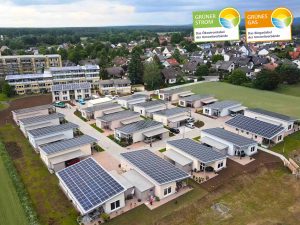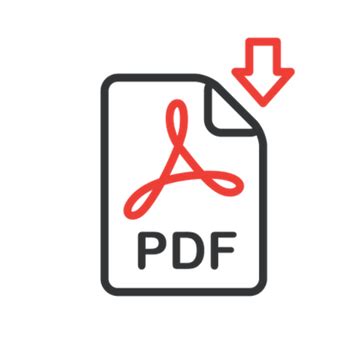Our green electricity criteria
Certification to the highest environmental standards
To make sure that you get a high-quality green electricity tariff, we constantly develop our criteria further
Independent institute
Tariffs with the Grüner Strom-Label are reviewed every two years and validated by an independent institute.
catalog of criteria
The basis for this is a detailed catalog of criteria that can be viewed by the public and is regularly reviewed and adjusted as necessary.
Associations
The criteria are constantly being developed by environmental, peace and consumer associations and independent energy experts.
100 % Green electricity
Every energy provider who wants to sell you green electricity must Guarantees of origin of the Federal Environment Agency.
Our label guarantees you that guarantees of origin and electricity quantities come from the same renewable energy source.
Expansion of renewables
Core criterion of the Grüner Strom-Label is that energy suppliers with a fixed amount per kilowatt hour sold the Expansion of renewable energies promote.
More than 1,800 energy transition projects have already been implemented, mostly renewable energy plants such as solar panels or wind turbines.
In the meantime, however, more and more projects in the areas of Mobility, Memory/Control and Energy efficiency implemented.
Sustainable thinking
The Grüner Strom-Label is awarded for a green electricity tariff, not for the supplier per se, but rules still apply to it:
Nuclear and coal power? No thanks!
Energy providers that have an interest in nuclear power plants or that still have an interest in coal-fired power plants as of the effective date of Jan. 1, 2027, will not be eligible for the Grüner Strom-Label.
Downloads






The catalog of criteria
All relevant criteria are recorded in this catalog.
Every two years, the certified green electricity tariffs are reviewed using the Green Electricity Criteria Catalog and the results are summarized in expert reports. The reports are prepared by an external auditor, independent institute reviewed.
Exclusion criteria
Exclusion criteria are those that do not allow certification if not met.
Participation of the company in Nuclear power plants
Participation of the company in Coal-fired power plants as of the reporting date 1.1.2027
Lack of investment in energy transition projects
Become a label holder
You would like to receive our label for your green electricity tariff? Learn more about the obligations and requirements of our certification.

Together for the energy turnaround
Your contact person
This is what we have achieved together
By choosing a certified green electricity or biogas tariff, you are directly supporting the energy transition. For every kilowatt hour consumed, a fixed amount flows into the expansion of renewable energies - that's sustainable thinking.

Switch to a certified electricity or biogas tariff now
There are already several online comparison portals for electricity and gas rates. So what's the point of another one?
At the comparison portal of the environmental associations, consumers can compare high-quality and exclusively certified green electricity and biogas tariffs.
"vergleich-dich-gruen.de" offers you the opportunity to actively participate in an energy transition that is nature-friendly, decentralized, citizen-oriented, public welfare-oriented, fair and pollutant-free through your purchase decision.
What you should know about green electricity
Grüner Strom-Label
Frequently asked questions
With Green Electricity-certified green electricity tariffs, guaranteed investments flow into the expansion of renewable energies. The level of investment is determined by a fixed amount per kilowatt hour consumed. Thus, your green power purchase indirectly influences investments in the energy transition.The funding areas include the mobility transition, energy infrastructure, energy efficiency, and other projects that serve the energy transition, such as nature conservation, development cooperation, and education.
The full range of funding opportunities can be found in the criteria catalog for the Grüner Strom-Label. Selected energy transition projects can be found here.
The Grüner Strom-Label is awarded for a green electricity tariff, not for the provider itself. The label criteria therefore relate primarily to the tariff.Thus, the Grüner Strom-Label can be found on tariffs of independent green electricity providers as well as on tariffs of municipal utilities that sell conventional electricity in addition to the certified green electricity.
Nevertheless, the Green Electricity certification also looks at aspects concerning the supplier. For example, the Grüner Strom-Label will not be granted to any company that is still directly involved in a coal-fired power plant on the cut-off date of 1.1.2027, i.e. operates a coal-fired power plant itself or is involved in an operating company with share capital/share capital. Participation in nuclear power plants is also an exclusion criterion.
In our Tariff portal of the environmental associations "vergleich-dich-gruen" You will find all tariffs and can easily switch to a real green electricity tariff with a Grüner Strom-Label.
Green Electricity
Green electricity is electrical energy that comes from renewable sources. It can be generated from solar radiation, wind and water power, biomass, geothermal energy or sewage gas. Electricity from renewable sources is ecologically and socially sound because it protects the climate and reduces the consumption of fossil, finite resources. In addition, it does not produce hazardous waste, such as radioactive waste from nuclear power plants. When you buy green electricity, it doesn't mean that green electricity is actually coming out of the pipe. Every kilowatt hour generated flows into an electricity lake, from which it is then redistributed to end customers. In other words, everyone gets the same physical electricity. But every single green electricity customer helps to make the electricity lake ever greener. However, green electricity does not automatically promote the energy transition. For this, additional investments must be made in the expansion of renewable energies. This is guaranteed by tariffs that carry the Green Electricity label. - -
Electricity from renewable energies is ecologically and socially acceptable because it protects the climate and the environment. Consumption of fossil, finite resources reduced is produced. In addition, no hazardous waste is produced, such as radioactive waste from nuclear power plants.
When you buy green electricity, this does not mean that green electricity actually comes out of the line. Every kilowatt hour generated flows into a Stromseefrom which it is then redistributed to the end customers. In other words, everyone receives the same physical electricity. But every single green electricity customer helps to make the electricity lake ever greener.
- - -
The numerous green electricity tariffsavailable on the energy market differ significantly from one another.
The crucial point with a green electricity tariff is whether consumers are choosing a green electricity tariff with their purchase decision. . . environmentally compatible expansion of renewable energies is subsidized. This is not the case with many green electricity offers.
It is important to make the electricity mix greener, Incentives for the expansion of renewable energies This is where the Grüner Strom-Label comes in: if you choose a tariff that has been awarded our seal of approval, you can be sure that every kilowatt hour you consume will go towards the expansion of renewable energies. The guaranteed investments in the environmentally compatible expansion of renewable energies are an essential Distinguishing feature compared to many other green electricity labels and green electricity tariffs.
Green electricity tariffs for private customers require an investment of at least 0.5 cents per kilowatt hour. Many energy providers also invest more than 0.5 cents per kilowatt hour.
. tariff portal of the environmental associations for switching energy providers. .
For trade customers, the Subsidy contribution are lower due to the higher consumption values: they range from 0.1 cents to 0.4 cents per kilowatt hour.
Yes. Green electricity tariffs do not necessarily have to bear a label. Certification by the Grüner Strom-Label or other seals of approval is voluntary. There are electricity providers who do not have their tariffs independently verified at all. Here, consumers must decide for themselves how credible the offer is.
In addition, it is not the energy providers that are certified, but only the individual tariffs. You can find more information about our certification here.







